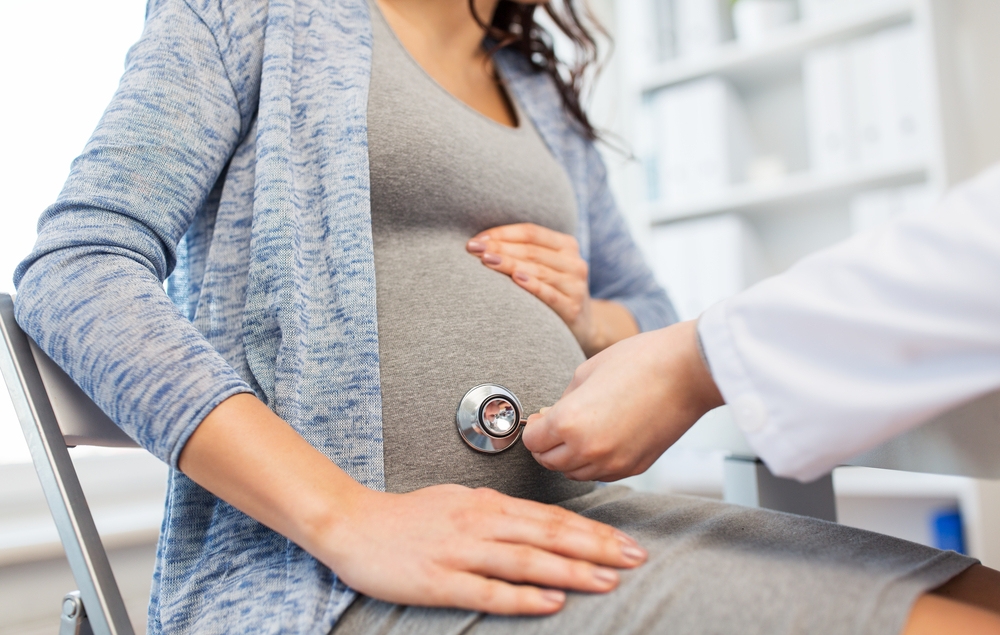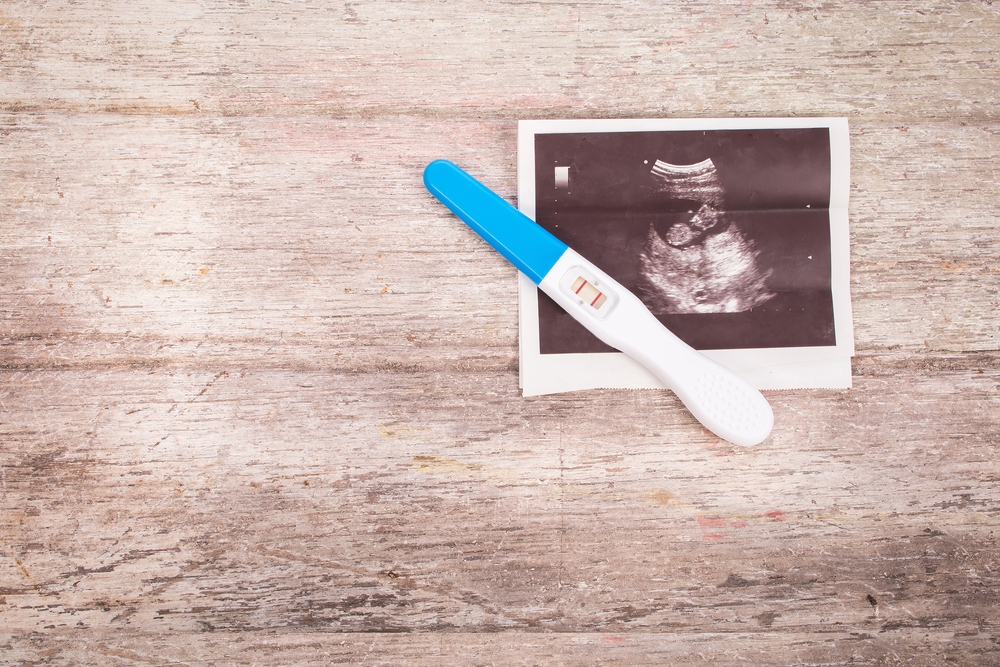
It is sweet and happy to give birth to a new life, but if prenatal examination is not done well, the process will become very bumpy.
Prenatal examination is much more important than everyone thinks. Research shows that pregnant women who lack health care awareness and have fewer prenatal examinations have significantly higher mortality rates during pregnancy and childbirth, and the chances of birth defects in their babies also increase.
How to do a good job of prenatal examination and reduce the risks mentioned above? Start by avoiding the following 11 misconceptions.
Myth 1: Don’t check the first two months of pregnancy,
Mothers-to-be know that they are pregnant, don’t have to rush for examination, wait until 16 weeks later to the hospital filing examination. Early to do B-ultrasound examination, may cause bad influence on the newly formed fetus.
It is very important and necessary to have an examination in the first trimester of pregnancy (within 12 weeks of pregnancy).
Doing a good job of examination at this stage can well avoid high-risk pregnancy and greatly reduce the possibility of problems for pregnant and lying-in women.
B-ultrasound examination is very safe. It can not only help expectant mothers with inaccurate menstruation to determine the gestational week, but also discover dangerous situations such as ectopic pregnancy in advance. If the examination is not done, ectopic pregnancy hemorrhage will be blindly treated as threatened abortion to protect the fetus, with unimaginable consequences.
B-ultrasound examination uses ultrasound to detect the internal condition. Simply put, ultrasound is similar to the sound wave (sound) emitted when we speak. It basically does not affect the human body and has no radiation. It is safe and effective to correctly use B-ultrasound examination.
As for yin ultrasound, its full name is vaginal B-ultrasound, which is just to place the probe in the vagina for examination. When there are no vaginal bleeding, infectious diseases and other diseases that are not suitable for examination, it is as safe as abdominal B-ultrasound and will not cause abortion or other adverse consequences.
Myth 2: Pre-pregnancy examination is not necessary for prenatal examination,
Having made sufficient preparations and conducted a comprehensive examination before pregnancy is tantamount to ensuring the safety of pregnancy, and prenatal examination is not necessary after pregnancy.
Pre-pregnancy examination and prenatal examination are actually aimed at different aspects. They are both very important and cannot replace each other.
The main purpose of pre-pregnancy examination is to eliminate hereditary diseases, while prenatal examination is to track and understand the nutrition and health status of pregnant women and fetuses at any time while checking whether the fetus is defective, so as to make preparations for choosing delivery methods and coping with emergencies.
Myth 3: Both husband and wife have no history of genetic diseases and do not need to have a prenatal examination.
It is said that there is a prenatal examination called Down’s syndrome screening, which is to check whether the fetus has Down’s syndrome, trisomy 18 syndrome, these hereditary diseases. Since both families have no history of hereditary diseases, there is no need to check again.
There is no history of hereditary diseases, but also a prenatal examination.
As mentioned in the previous article, the functions of prenatal examination also include tracking and understanding the nutritional and health status, selecting delivery methods, etc. Genetic disease screening is only a part of them.
Moreover, the absence of a history of genetic diseases in the family does not mean that there is no possibility of carrying defective genes. If both husband and wife happen to be carriers of a recessive pathogenic gene, do you really want to gamble on probability?
Myth 4: Prenatal Examination Is Blood Drawing
In addition to B-ultrasound, prenatal examination is left with blood tests. As for what’s medical history, it is just a formality and there is no need to tell the doctor in detail.
It is not enough to draw blood for examination.
The risk assessment of prenatal screening can be clearly understood not only through blood tests. The age, height, weight, abdominal circumference, gestational weeks, personal history (such as smoking, diabetes, hypertension) and fertility history of pregnant women may affect the safety of the mother and fetus.
Only by understanding clear and comprehensive information can doctors give reasonable guidance during pregnancy.

Myth 5: prenatal examination can check all diseases,
After asking so many questions and checking so many prenatal examinations, should we be able to find out all possible risks of illness? Therefore, if you do a good job in the prenatal examination, you will be safe.
Prenatal examination can indeed find some problems and deal with them in time, but this does not mean that it is omnipotent.
For example, hematological examination can only assess the risks of Down syndrome, trisomy 18 syndrome, open neural tube defect and trisomy 13 syndrome. Ultrasonic examination can find some fetal developmental abnormalities and malformations.
However, no matter what kind of examination method, its evaluation scope is limited and the accuracy cannot be 100%. We should still have a common heart and do not exaggerate the function of prenatal examination.
To paraphrase the saying, prenatal examination is not everything, but it is absolutely impossible not to do prenatal examination.
Myth 6: Abnormal prenatal examination requires termination of pregnancy,
I know prenatal check-up is very useful, does it have to flow out the child once abnormalities are found?
This is not necessarily true. Isn’t Faye Wong’s [cleft lip] child very good? In fact, whether to terminate pregnancy depends on how’s abnormality.
- For example, some morphological deformities, such as one more finger, cleft lip, etc., without any other chromosomal abnormalities and no obvious influence on the baby’s activities after birth, can be repaired by surgery without terminating pregnancy. If it is anencephaly, visceral swelling and other serious deformities, the pregnancy should be terminated.
In short, to do what treatment, professional doctors should be invited to judge.
In addition, as mentioned in the previous article, no examination has a 100% accuracy rate. Even if it is a high risk, it is not a one-time examination that can make a final conclusion. Low risk also does not mean that one can rest easy and regular follow-up is essential.
Myth 7: No Gynecological Examination
The traditional idea is that pregnant women’s gynecological examination will lead to abortion. I still listen to the old man and will not suffer.
The old man’s words may be valuable experience, but they may also be backward concepts. For example, this is a misunderstanding of gynecological examination.
Gynecological examination is a necessary examination item in the early pregnancy examination, which refers to vaginal examination and gynecological internal examination. It is very important to investigate cervical neoplasms, reproductive tract infection, cervical malignant tumors, pelvic lesions, etc., and these routine examinations will not cause any damage to the fetus.
Myth 8: Random Determination of Birth Examination Time
I am not a stay-at-home mother, I am lazy and don’t want to move, the weather is not good today… I don’t want to go to the prenatal examination on time, there are 10,000 reasons to refuse. In fact, there is no need to follow the doctor’s advice to have regular examinations…
The number and time interval of prenatal examinations are scientifically based and cannot be changed at will.
According to the established schedule, the growth and development of the baby and the health status of the expectant mother can be better monitored, and some specific examinations can only be carried out at specific stages to obtain the best data.
For example, the screening of Down’s syndrome is the best testing time during the second examination. Even if you really encounter special circumstances and cannot review on time, you should follow the doctor’s advice and do the examination according to the follow-up date agreed with the doctor.

Myth 9: The first child is fine, and the second child can be given less prenatal examination.
Everything was fine when I gave birth to the first baby, so I should be able to do less prenatal examination when I was pregnant with the second baby, right?
Whether it is one, two, three or four children, the pregnant mother should undergo regular prenatal examination during pregnancy.
The [second child] is not a copy and paste of the [first child]. The genetic composition of the living body will not be exactly the same as that of the [first child]. The physiological condition of the pregnant mother is also constantly changing. Only through regular prenatal examination can the mother-fetus condition be tracked and understood and the health of both be guaranteed.
In addition, after the age of 35, the risk of pregnancy will be higher for both primipara and menstrual parturients. As the chance of chromosome non-separation increases and the fetal chromosome aberration rate becomes higher, it is even more essential to do a good job in prenatal examination.
Myth 10: Young People Can Have Less Birth Examination
I know that the risk factor of elderly parturients is high, so as a young pregnant mother, can you do less prenatal examination or not at all? After all, I am young and healthy.
No matter what’s age, she must have a prenatal examination when she is pregnant.
The best pregnancy age for women is 24-29 years old, Too late marriage and childbearing is not conducive to the health of the mother and fetus, but too early marriage and childbearing. As the male and female reproductive organs and pelvis are still at the stage of development and are not fully mature, the fetus will compete with the mother for nutrition after gestation, which is not conducive to the development of the fetus or the health of the mother. The probability of abortion, premature delivery or complications and sequelae will increase.
Even if you are pregnant at the right age, the risk of abnormality is relatively low, which does not mean that there will be no abnormality.
Myth 11: Non-invasive Prenatal DNA Testing Can Replace Prenatal Examination
Traditional prenatal examination methods have false positive rates. Prenatal diagnosis such as amniocentesis also has certain risks of wound infection and abortion. It is said that non-invasive prenatal DNA examination only needs to collect 5 mL venous blood of pregnant women to find out the problem, so this is used instead of prenatal examination.
Non-invasive prenatal DNA testing cannot replace other tests.
Although the accuracy rate of non-invasive prenatal DNA detection is high, its detection range is narrow. At present, it only has high accuracy for chromosome 21, 18 and 13 abnormalities, and slightly lower accuracy for sex chromosomes. The evaluation of placental function, risk assessment of pregnancy-induced hypertension of pregnant women, assessment of other fetal development abnormalities and other adverse pregnancy results achieved by prenatal examination is also far behind.
Moreover, the average cost of this examination is about 2,000 yuan, which is a big expense for poor families.
If conditions permit, it is recommended to use it together on the basis of prenatal examination. If invasive prenatal diagnosis cannot be carried out, alternative use can be considered.
